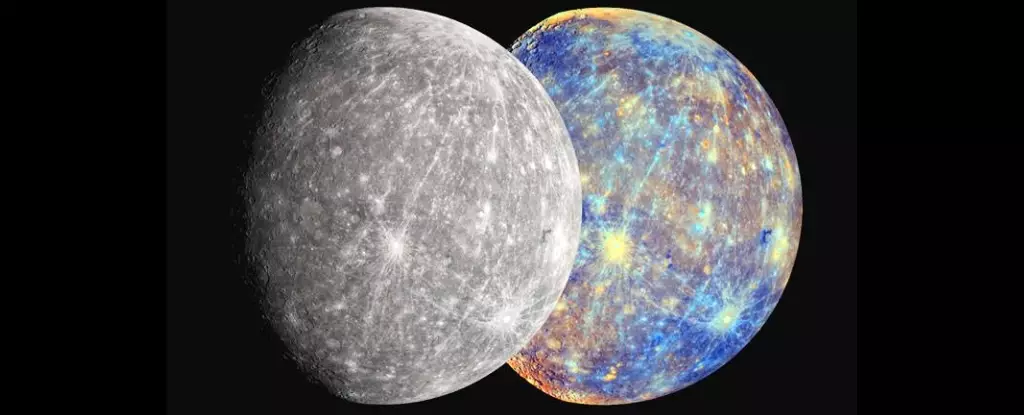Despite its reputation for being the most mysterious of our neighboring planets, Mercury frequently slips under the radar, cloaked in its proximity to the Sun. However, July 2025 offers an exceptional window for skywatchers eager to encounter this enigmatic world. Positioned at its greatest elongation, Mercury presents a rare and accessible glimpse into its intricate dance around the Sun. This alignment isn’t just a fleeting astronomical trivia; it’s an invitation to witness one of the solar system’s most elusive planets with your own eyes. Such opportunities don’t come around often—merely six times annually, when Mercury reaches its furthest apparent point from the Sun from our vantage point on Earth. These moments provide a perfect pretext for both amateur and seasoned astronomers to delve into planetary observation and experience the thrill of unveiling Mercury’s hidden face.
Why Mercury’s Greatest Elongation is So Special
The key to observing Mercury during this period lies in understanding what elongation entails. When Mercury reaches its greatest elongation, it appears at its most distant point from the Sun as seen from Earth, offering a brief window where it’s visible after sunset or before sunrise. However, not all elongation events are created equal; their visibility depends heavily on seasonal angles and the orientation of the ecliptic plane relative to our horizon. July’s elongation coincides with a unique orbital phase—just ten days before Mercury begins its aphelion, the furthest point from the Sun in its elliptical orbit. This timing makes Mercury especially prominent in the western sky, shimmering around 10 degrees above the horizon during twilight—an inviting target for those with binoculars or small telescopes. Coupled with its relatively bright magnitude of +0.5, Mercury becomes an attainable yet captivating target for observers willing to look just after sunset.
Beyond the Basics: What Makes Mercury Intriguing
While Mercury’s visibility might seem straightforward—just look west after sunset—the planet’s inherent complexity makes its observation deeply rewarding. Its orbit’s elliptical shape leads to variability in apparent brightness and apparent size throughout the year. During July, Mercury appears as a crescent, its half-phase disk gradually expanding and shrinking in size as it transitions through its elongation. This phase cycle helps astronomers and enthusiasts appreciate the dynamic nature of planetary orbits firsthand. Furthermore, Mercury’s proximity to the Sun means that it is often overpowered by its bright glow, making detailed observation challenging from the ground. Yet, catching Mercury near its maximum elongation offers a glimpse of the planet’s subtle nuances—its surface features, its phases, and the sense of connection to the broader cosmic rhythm that governs our solar neighborhood.
Cosmic Events and Opportunities in July 2025
Beyond Mercury’s fleeting appearances, July 2025 is packed with celestial phenomena that enhance the summer sky’s allure. The month’s astronomical highlights include a rare occultation of the Pleiades star cluster by the waning crescent Moon on July 20th—an event that adds a layer of thrill to your stargazing experience, especially across North America. The Moon’s gentle passage over the cluster offers an intimate moment of cosmic obscuration, a celestial choreography that reminds us of the universe’s intricate design. During the same month, the International Space Station (ISS) makes a series of bright, full-illuminated passes, creating excellent opportunities for satellite tracking enthusiasts. Combining these events with Mercury’s evening apparition—especially on July 4th, when fireworks light up the sky—can make for a memorable summer night of planetary and stellar exploration. Imagine the synergy of fireworks, an orbiting space station, and the elusive glow of Mercury—all unfolding in one captivating sky.
Looking Towards Future Missions and the Scientific Significance of Mercury
Our fascination with Mercury extends far beyond visual observation. It is a focal point of scientific curiosity due to its unique characteristics—such as its sodium ion tail, generated by solar wind interactions with its thin exosphere, resembles a miniature comet. This discovery has been aided by both professional spacecraft and vigilant amateur astronomers, blurring the lines between science and hobbyist exploration. NASA’s ongoing MESSENGER mission revolutionized our understanding of Mercury, revealing its cratered surface, magnetic field, and geologic diversity. Now, with the upcoming orbital insertion of JAXA and ESA’s collaborative BepiColombo mission, our knowledge of Mercury is poised to grow even deeper. These missions are crucial for unveiling the planet’s secrets, from its core composition to its mysterious exosphere. Observing Mercury during this time is more than a visual act—it’s a front-row seat to the tail-end of a scientific journey that promises to expand our understanding of planetary formation, magnetic dynamics, and solar wind interactions in our closest planetary neighbor.
Inspiring the Next Generation of Skywatchers
Ultimately, Mercury’s month-long visibility period serves as a powerful reminder that the universe holds many secrets waiting to be uncovered. It challenges us to look beyond the familiar and explore the nuanced beauty of our solar system. Whether through binoculars, telescopes, or simply the naked eye, catching Mercury in the glow of July’s evening sky invites a sense of wonder and discovery. For those willing to venture outside after a day’s routine, Mercury’s brief appearances are an opportunity to connect with the cosmos on a personal level. They serve as a testament to human curiosity—a call to look up, observe, and marvel at the intricate mechanics of our celestial neighborhood. With each glance, we glimpse not only a distant planet but also the collective drive to understand the universe we inhabit.

